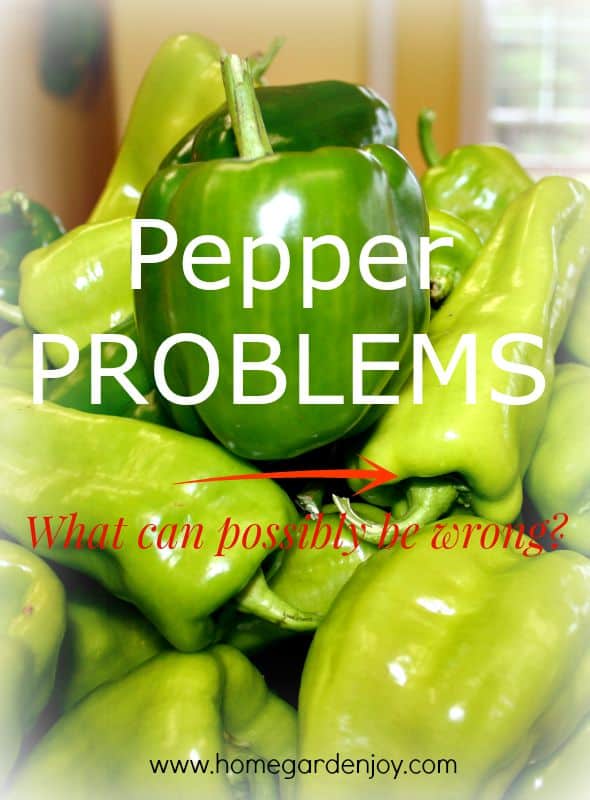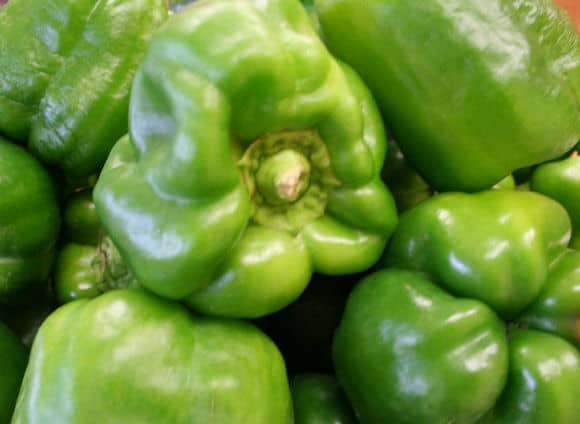When peppers go wrong…pepper problems? My peppers grew into weirdly shaped vegetables this year.
My peppers this year are sorry excuses for what might have been, what could have been, what I wished for and hoped for. Was it something I said? Something I did? Something I didn’t do? The fact remains that I have a bed full of plants that look like little topiary pepper trees, and three – count ’em, three – peppers from 14 plants. Fourteen plants!
In other years, the harvest looked like this:
This year I won’t even share a picture of them.
It’s sad, really.
Pepper Problems
When Peppers Go Wrong
So what gives? Why are my peppers sulking? Why are they dropping their lower leaves so that they resemble little pompom topiary bushes? Why aren’t they producing flowers and the subsequent peppers we’ve grown to expect from our Virginia garden each year?
Here are a few possible reasons…
- My pepper plants have root rot. Liz, my friend in the Master Gardener program, made an interesting observation. This is the first year that I’ve been diligently watering with my soaker hose. Perhaps I’ve given the peppers too much love, too much watering. Liz suggested I dig up one of the weakest plants and look at the roots. If they’re rotted, it’s root rot, and I know I need to cut back on the watering. I plan to do this later tonight. It can’t hurt, and sacrificing one plant isn’t so bad when it’s not producing anything.
- I burned the roots (accidentally, of course). Another possibility is that I burned the roots. How? With the same soaker hose. This is the first year that I purchased one of those lightweight, crinkly hoses that expands when the water hits them. Because it doesn’t reach the back beds in the raised garden when I start watering until it is fully expanded, I always water the pepper bed first, the bed closest to the hose. The downside is that the water inside the pipes may be hot and burning the roots. My husband doesn’t think this is the case, since the majority of the pipes run underground to the garden and the hose is brought into the garage after use, so it’s not baking in the heat of the day. Nevertheless, it is possible.
- We’ve killed them with kindness. We amended the garden beds with peat moss, compost and fertilizer before planting. Perhaps we were too kind and fed the plants too much of a good thing. Since they’re barely producing any flowers, it’s possible we gave them too much nitrogen, or created an imbalance in the soil that’s making it difficult for them to absorb the nutrients they need.
I’m still diagnosing my pepper problems, but one thing I’ve learned this year is that as a gardener, I can’t get complacent. I can’t rely on any one crop, or any one gardening method, or any one particular vegetable to perform reliably in the garden. Nature isn’t reliable. She’s fickle. Gardens teach me above all else to go with the flow, to adjust and adapt, and to take life on its own terms – especially peppers!
Pepper RECIPES to Cook What You Grow!
Cook what you grow. Here are some recipes from the garden, or pepper recipes to enjoy.







